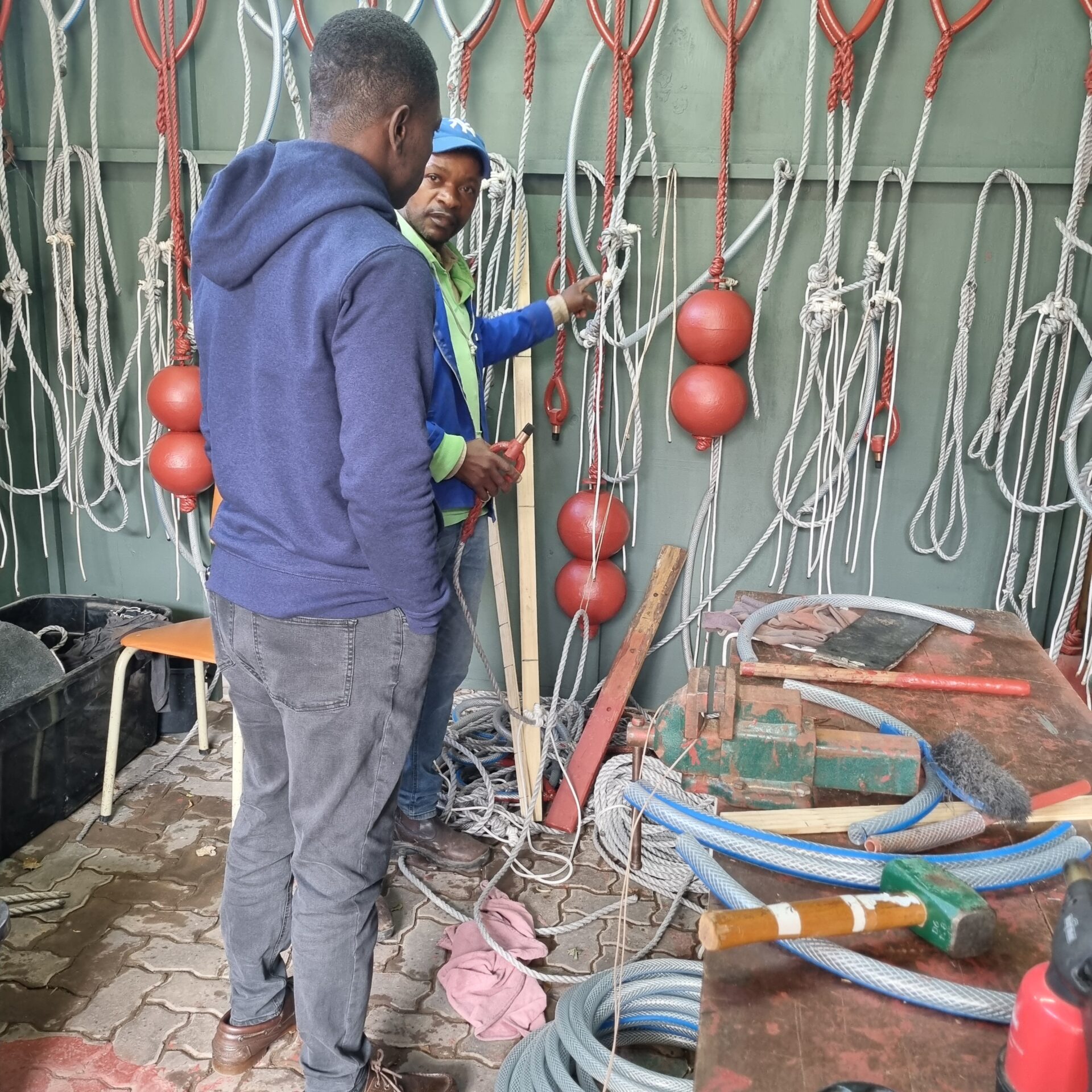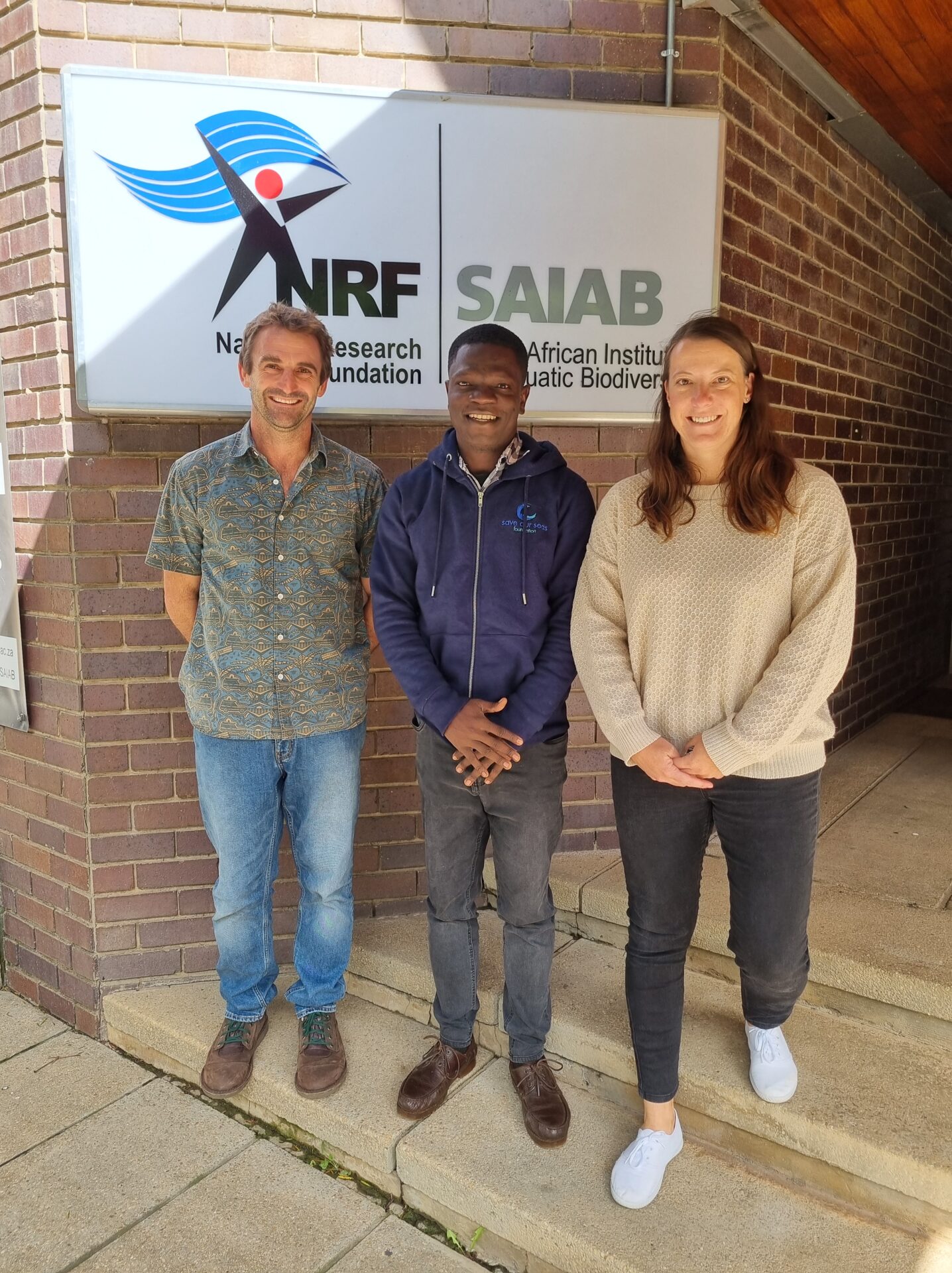Enhancing Shark and Ray Research and Conservation in West Africa with Advanced Camera and Telemetry Technology
Over nearly five years of research and conservation efforts focused on sharks and rays in Ghana, critical baseline data on catch rates and the reliance of fishing communities on these species has been gathered. This information is especially valuable in a data-poor region like Ghana and the broader West African sub-region. My work has significantly contributed to bridging the knowledge gap in global shark conservation. We now have a clearer understanding of the various shark and ray species caught by local fishers, their market value, and the evolving patterns in their catch. Specifically, we have detailed insights into what fishers bring to different landing sites and communities, their practices with the caught sharks and rays, and their motivations for targeting these species.

Photo © Issah Seidu
However, in Ghana and many West African nations, there is a significant gap in our understanding of the marine ecosystem. We lack comprehensive data on the sharks and rays and marine resources beneath our waters, including the specific locations where fishers target and catch them, the diversity and population sizes of these species, and the habitat variables influencing their distribution. Although some efforts have been made to gather information on core fishing grounds and the fishing trajectories and patterns of fishers, these data may be unreliable. Fishers, motivated to protect their livelihoods might not provide accurate information about their fishing zones. This could result in false GPS points being reported as core fishing areas and inaccurate data being shared during surveys. Consequently, the reliability of this information is questionable, as fishers may intentionally misrepresent their activities to safeguard their interests.

Photo © Issah Seidu
AquaLife Conservancy aims to collect further ecological baseline information by initiating an acoustic telemetry and video survey using Baited Remote Underwater Video (BRUV) systems study. These data will address the gaps in spatial and movement information and provide accurate details for mapping and designating key marine areas for sharks, rays, and other marine megafauna. However, there is a lack of expertise in these research areas in Ghana and many West African sub-regions, hindering efforts to build capacity in spatial data collection. Recognizing this challenge, I traveled to South Africa in April 2024 and was hosted by collaborators at the South African Institute for Aquatic Biodiversity: Dr Taryn Murray, who currently manages the Acoustic Tracking Array Platform – a collaborative network of acoustic receivers monitoring the movements and migrations of acoustically tagged fishes, sharks, rays, skates, and turtles; and Dr Dr Anthony Bernard, who currently managed the Marine Remote Imagery Platform – a camera platform collecting information on both demersal and benthic fish populations, as well as sessile and mobile invertebrate species. Despite the unseasonal rainy weather which put a dampener on fieldwork, I was able to learn more about conducting telemetry and video survey projects, as well as the protocols related to these two methodologies. I also had the opportunity to present my Save Our Seas Foundation-supported research findings and conservation efforts on sharks and rays at SAIAB to researchers and students. Additionally, I engaged in a series of meetings with Drs Bernard and Murray to discuss the potential for replicating some of their work in the West African sub-region. As a result, we have established a network of scientists from SAIAB and four different maritime countries in the sub-region: Ghana, Nigeria, Benin, and Ivory Coast. We are now seeking funding to support the replication of BRUV systems in the region, with the primary goal of assessing shark and ray diversity, population size, their distribution, and monitoring their critical habitats in the sub-region. A lot of work to do, but we’re excited for this next chapter in AquaLife Conservancy’s book!


Photo © Issah Seidu
